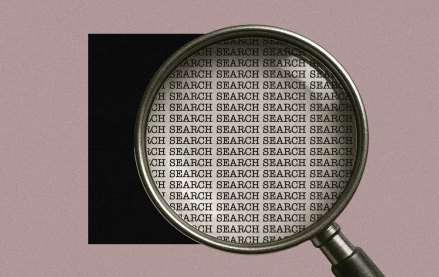Register by Jan 13 to save on passes and connect with marketers from Uber, Bose and more
Media Briefing: New AI-focused roles signal an evolution of AI strategy at news publishers

This Media Briefing covers the latest in media trends for Digiday+ members and is distributed over email every Thursday at 10 a.m. ET. More from the series →
This week’s Media Briefing looks at newly-created, AI-focused executive roles at publications like The Washington Post and Forbes, moves that reflect how news organizations are making the new technology a core part of their business infrastructures.
- The Washington Post and Forbes are the latest news outlets to elevate executives to AI-focused roles, centralizing oversight of AI strategy and partnerships.
- Google is looking to sign deals with news publishers for an upcoming AI project, L.A. Times owner wants to take the company public, and more.
New executive roles mean AI is no longer a “side experiment” at news publishers
Publishers have come a long way since cobbling together task forces to experiment and test AI tools. Now, they’re creating new executive roles and teams to manage AI strategy across their organizations.
Last week, Forbes announced a new AI-focused executive and 24-person team. Newly-promoted chief business and strategy officer Kyle Vinansky will oversee a department called the “AI & Strategic Platforms Group.”
In June, Sam Han was promoted to the new role of chief AI officer at The Washington Post, where he now leads AI product development across the company. Meanwhile, Rob Lang was named newsroom AI editor at Reuters, a new role. And in May, Business Insider appointed Julia Hood as its new newsroom AI lead.
The first wave of AI roles within newsrooms began in 2023. That was when Zach Seward, formerly EIC at Quartz, was named The New York Times’ newsroom’s editorial director of AI initiatives to oversee AI-related principles, tests and training within the newsroom. Madhumita Murgia became the Financial Times’ first AI editor.
The Washington Post’s hiring of a CAIO and Forbes’ expansion of its AI and platforms team both signal a turning point in how publishers view and operationalize AI. Rather than treating it as a series of experiments or newsroom novelties, these moves suggest AI is now seen as core infrastructure, requiring cross-departmental coordination and giving more centralized oversight – a shift that reflects the start of a broader maturation of both the tech itself and publishers strategies around it.
These new executive and leadership roles signal AI technology is “no longer a side experiment or siloed tool — it’s becoming part of the core business infrastructure,” said Sean Puddle, managing director of North America at talent search firm Robert Walters.
“This marks a maturing approach to AI, particularly among media companies looking to future-proof their models,” he added. “AI is now viewed as a strategic asset — one that demands ethical leadership, cross-functional integration, and long-term governance.”
New titles like CAIO and vp of AI strategy are becoming more common, though the volume “isn’t massive yet,” according to Puddle. Allison Shrivastava, an economist at job search platform Indeed, said job postings that mention generative AI have had “incredible growth,” though they still account for a small share of postings overall.
While Indeed is seeing some expansion into other sectors beyond software developments, Shrivastava believed it will take some time for these job postings to appear widely.
“The rise of these roles in recent months indicates not just a technological transition, but a deeper commitment in the industry to reshape how media is produced, distributed, and monetized in the age of generative AI,” Puddle said.
By appointing dedicated roles or teams, publishers are creating internal hubs of expertise to guide implementation and serve as resources across the organization, according to Tony Filson, founding partner and CEO of media recruiting firm Filcro Media Staffing.
“We’re really putting people in place that are making these resources available to the entire company, every single division,” Filson said. They ensure that the new technology is being integrated throughout an organization. It’s also a marketing tactic, Filson said. It helps publishers look like they are at the forefront of the new AI era.
Part of Vinansky’s remit will be to expand existing deals with AI companies, and find new ones, Forbes CEO Sherry Phillips told Digiday. Forbes is one of the 200 publishers that has a deal with Amazon that allows users of its AI smart speaker Alexa to get news and information from those publishers.
“What this department will really do is identify, build and scale the next era and the next generation of revenue for Forbes. So it will work in concert across the entire organization, but really focused on both the product side and the business side. This department will really act as the strategic glue,” Phillips said.
Publishers started dabbling with generative AI technology in late 2022 and early 2023, just after OpenAI launched ChatGPT. That developed into forming new teams dedicated to overseeing AI initiatives by the spring. These teams were typically cross-functional, with representatives from departments like editorial, business, sales, marketing, engineering, product, HR and legal.
But this approach deepened silos within media organizations, according to Phillips. Forbes had a partnership with an AI tech company (which she declined to name), and its sales team would work with them at the same time as the product team, without realizing either team was communicating with them.
“There does need to be accountability to make sure that we are communicating across some of these larger tech organizations,” Phillips said.
Vinansky and his team will be charged with filling some of those gaps, she said. They will also look at revenue opportunities across other platforms, including events, licensing, ecommerce, social media and creators.
“Publishers would be derelict in their jobs if they didn’t explore how AI can be incorporated into their organizations,” said Paul Farhi, a Washington Post veteran reporter who covered media. “Having been slow on the uptake in adapting to the internet, then to social media, then to video, [publishers] may have finally learned a lesson when it comes to the alleged ‘Next Big Thing.’”
But this formalization is happening alongside a different kind of AI reckoning: some publishers, including Fortune and Business Insider, have recently cut staff while pointing to AI’s role in reshaping workflows and reducing content production needs. Together, these moves highlight the retention between AI as a strategic investment and AI as a cost-cutting tool – and underscore the urgency for publishers to define how they’ll integrate the technology.
So far, news publishers’ push to integrate more AI technology into their organizations haven’t been a “game changer” yet, in Farhi’s opinion.
“Maturation may be too strong a word for where the news industry is right now with AI. But the growth process is underway,” he added.
What we’ve heard
“We took a look at it. We’re not going to launch it. We didn’t view it as something we wanted to introduce to our audience at this point.”
– Mark Howard, chief operating officer of Time, on Google’s new Offerwall product.
Numbers to know
1%: The percentage of Google’s AI Overviews that resulted in a user clicking on a source in the AI-generated summary, according to new Pew Research data.
5%: The growth of Future plc’s U.S. advertising revenue year over year, according to the company’s latest earnings.
10%: The percentage of Fortune’s global workforce getting pink slips.
$200 million: The sale price Bari Weiss is seeking for her media start-up The Free Press.
$10 billion: The amount President Donald Trump is seeking from The Wall Street Journal and owner Rupert Murdoch in a defamation lawsuit over a story about his ties with Jeffrey Epstein.
What we’ve covered
Newsweek is building revenue beyond traffic
- Newsweek is launching more subscription products and expanding non-advertising revenue streams as it braces for a future where AI answer engines replace traditional search.
- Newsweek CEO Dev Pragad stressed that Google AI Overviews and AI platforms generally haven’t caused significant traffic erosion yet, but that the publisher wants to reduce its reliance on digital advertising, taking the split from 63 percent of its overall revenue to 55 percent over the next year.
Read more about Newsweek’s strategy here.
Confessions of a comms exec on exploring conservative media partnerships in hyper-partisan era
- Big brands and their agency partners have largely shied away from advertising on conservative channels, citing brand safety fears.
- But one diverse, inclusivity-driven comms agency took on a conservative, faith-based media client and is trying to better understand right-wing media to help clients adjust to the new hyper-partisan normal.
Read the conversation here.
The key terms to know on AI bot traffic and monetization
- As generative AI reshapes how content is surfaced, scraped, summarized and monetized, new vocabulary is cropping up in the media industry.
- Here’s a jargon buster to help make sense of the emerging vocabulary of AI-media economics, what these terms mean, and why they matter now.
Learn more about the terms here.
YouTube’s AI slop crackdown has creators concerned, marketers cheering
- YouTube recently updated its creator policies for the YouTube Partner Program to more broadly cover “inauthentic content” such as repetitive uploads of slideshows with similar narrations.
- Some creators are wary of YouTube’s AI slop cleanup, but marketers see it as a win for the platform.
Read more about the reactions to the crackdown here.
Publishers identify the top trends among Gen Z readers
- Gen Z makes up a very small percentage of publishers’ readership as of Q2 2025, according to recent Digiday+ Research.
- Seventy-one percent of publisher pros told Digiday that Gen Z makes up between 0% and 25% of their audience.
Read the report here.
What we’re reading
Google is looking to sign licensing deals with news publishers
Google wants news publishers to join an AI licensing pilot project, Bloomberg reported. The tech giant is seeking about 20 news outlets to be a part of its initiative.
L.A. Times owner wants to take the company public
L.A. Times owner Patrick Soon-Shiong said he wants to take the company public within the next year, in an interview with “Daily Show” host Jon Stewart, Nieman Lab reported.
The Washington Post’s “TikTok guy” is leaving
Dave Jorgenson, who became the face of The Washington Post’s TikTok presence, is leaving the publication to start his own video company, The New York Times reported. The Post’s director of video Micah Gelman is also leaving to join Jorgenson’s company.
News/Media Alliance shakes down 12ft.io
The news publisher trade association said it successfully forced the shutdown of 12ft.io, a website that helped users bypass paywalls and view webpages without ads, The Verge reported.
404 Media cofounder Jason Koebler on why he thinks media’s pivot to AI won’t work
In an op-ed, Koebler explains why he thinks the pivot to AI is a foolhardy business strategy, and one that won’t succeed. Instead, publishers should be focused on building direct relationships with readers. (ChatGPT has referred just one person to become a paid subscriber to 404 Media, in May, he noted.)
More in Media

Future starts to sharpen its AI search visibility playbook
Future is boosting AI search citations and mentions with a tool called Future Optic, and offering the product to branded content clients.

Digiday’s extensive guide to what’s in and out for creators in 2026
With AI-generated content flooding social media platforms, embracing the messiness and imperfection of being human will help creators stand out in the spreading sea of slapdash slop.

Media Briefing: Here’s what media execs are prioritizing in 2026
Media executives enter 2026 weathered by disruption, but refocused on AI revenue, brand strength and video and creator opportunities.








